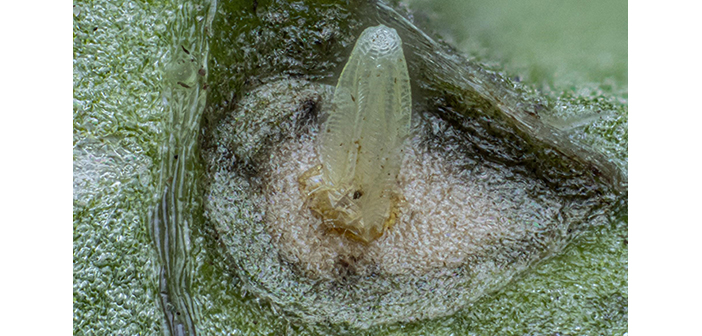New research at Wageningen University & Research (WUR) has shed light onto how plants protect themselves from damaging insects, and in particularly the mechanism of strong leaf necrosis, which allows plants to detect and kill the eggs of butterflies and other insects on their leaves.
When a cabbage white butterfly lays its eggs on wild crucifer plants such as black mustard (Brassica nigra), the plant can initiate a necrotic reaction which causes the leaf beneath the egg to die in a controlled manner, which causes the egg to desiccate and fall off the plant.
Scientists screened 31 plant species within the crucifer family for the necrotic response to a wash made from eggs of nine butterfly species.
“The experiments showed that the strong leaf necrosis evolved almost exclusively in the lineage of the cabbage crops and their wild relatives naturally attacked by cabbage white butterflies”, says research leader Nina Fatouros. “Moreover, leaf necrosis was triggered only by those butterfly species within the Pieridae family that are specialists of crucifers and are able to feed on them despite the crucifers’ toxic mustard oils.”
These findings suggest that the egg-killing trait has evolved in the crucifer family as a counteradaptation to the ability of caterpillars to detoxify mustard oils. Being part of an ongoing arms-race, some butterflies likely adapted to egg-killing by clustering eggs in groups (thus less affected by necrosis), by switching to other host plants, or by depositing eggs on flowers instead of leaves.
Photo Caption: Cabbage white butterflies triggered egg-killing leaf necrosis in crucifers
Photo source: WUR














